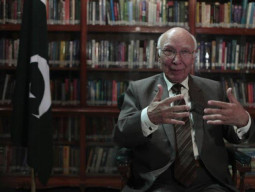
Turkmenistan has the fourth-largest natural gas reserves in the world; Kazakhstan has the second-largest oil reserves of the former Soviet Union, second only to Russia; Uzbekistan is a major producer of uranium (as is Kazakhstan) and has large natural gas reserves, as does, quite likely, Tajikistan; and Kyrgyzstan and Tajikistan have significant hydropower potential. And the natural beauty of these two countries could boost a lucrative tourism sector, as could Uzbekistan’s great Silk Road cities of Samarkand, Bohkhara and Khiva.
Big neighbour and our all-weather friend China’s economic influence is growing in the region at a fast pace. Beijing is very active in the region with its ambitious plans to advance Asian connectivity through overland and maritime routes. It is said to have committed tens of billions of dollars to building roads and rails to better connect its factories and markets in Asia and Europe. But that, it is believed, would only be possible if Afghanistan can connect its economy to the countries of Central Asia and South Asia, to China and to Europe, serving as a hub for regional energy markets and with reliable trade and transport links, benefiting the entire region.
Afghanistan expects to become a platform for cooperation in a vast region that extends from India to Azerbaijan and beyond. There is the Lapis Lazuli Corridor as well which would run through Afghanistan and Turkmenistan, across the Caspian to Georgia, and on to Turkey and Europe. China supports Afghanistan’s transition; and it warily guards against extremist ideology among its youth.
Central Asia is located in close proximity to Iran, a country that shares many ancient cultural and economic ties with the region. And if the thaw in its relations with the US develops into business-like ties in times to come, Tehran would find itself in a position to serve as a gateway to Europe, as well as a gateway to India. Iran would also be able to help its Central Asian neighbours in water conservation, combating desertification and curbing drug trafficking. And Turkey is also very much interested in the region, given the Turkic influences there. At the time of disintegration of the Soviet Union, Turkey had declared its intentions to exploit its Turkic influence to gain an economic foothold in the region.
The US, our friend but not of the all-weather variety, is already helping to build a regional energy market to connect Central Asia’s tremendous supplies of natural gas and hydropower to 1.6 billion energy-hungry consumers in South Asia. The US support for the CASA-1000 electricity line is expected to help bring surplus hydro-electricity from Kyrgyzstan and Tajikistan to Afghanistan and Pakistan — where over 80 million people lack access to electricity. That’s why, as part of the New Silk Road initiative, the US is helping develop the region’s connectivity — improving trade and transport infrastructure, standardising customs and border procedures, and strengthening the links between energy producers and consumers. The US is also supporting Kazakhstan’s efforts to join Kyrgyzstan and Tajikistan as members of the World Trade Organisation, and it is expected that this long-sought goal would be realised this year.
The US does not see China’s involvement in Central Asia in zero-sum terms. Its development of infrastructure in Central Asia is being regarded in Washington as fully complementary to US efforts. And in particular, the US sees an important role for China in supporting the transition in Afghanistan and advancing its own integration into the broader Asia region.
Where is Pakistan in this emerging economic and trade equation in a neighbouring region? As of today, no one seems to be even aware of our existence. And the reason why this is so is our continued refusal to see the tremendous economic potential for Pakistan in allowing India a transit route to Central Asia. India seemingly needs the route so badly that it would even be prepared perhaps, to revisit the proposed four-step Kashmir solution.
Published in The Express Tribune, April 8th, 2015.
Like Opinion & Editorial on Facebook, follow @ETOpEd on Twitter to receive all updates on all our daily pieces.











































COMMENTS (13)
Comments are moderated and generally will be posted if they are on-topic and not abusive.
For more information, please see our Comments FAQ